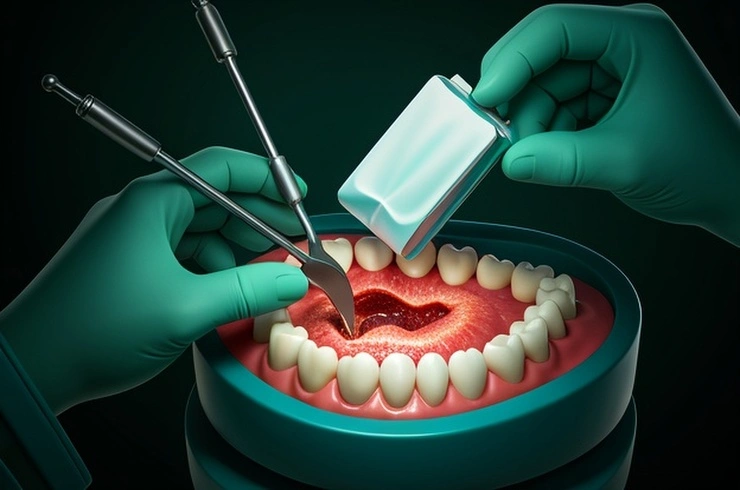
When thinking about wisdom teeth, extractions often come to mind. However, a less common but equally important issue, an operculum, can necessitate a different surgical approach: an operculectomy. This minor procedure addresses an inflamed or infected flap of gum tissue that covers a partially erupted tooth, most commonly a wisdom tooth.
A gingival operculum, also known as a pericoronal flap, is a piece of excess gum tissue situated over a tooth that hasn't fully emerged. This flap creates a prime location for food particles and bacteria to accumulate, leading to inflammation known as pericoronitis or operculitis. Symptoms of an infected operculum can include pain during biting or swallowing, bad breath, an unpleasant taste, or pus discharge. If left untreated, the infection can escalate, causing facial swelling, swollen lymph nodes, and jaw spasms, potentially spreading to the throat and sinus cavities, which can be life-threatening. Prompt dental attention is crucial at the first sign of pericoronitis.
Treatment for a dental operculum typically begins with clearing the infection. Your dental professional will likely flush the affected area to remove debris and may prescribe oral antibiotics or an antibacterial rinse. Over-the-counter pain relievers can help manage discomfort. The decision between an operculectomy and a wisdom tooth extraction depends on the individual case. An operculectomy is usually recommended if the wisdom tooth is erupting normally but the operculum repeatedly becomes infected. This procedure involves removing the problematic gum flap, making the area easier to clean and reducing the likelihood of future inflammation.
Conversely, if the wisdom tooth is fully or partially impacted, extraction is often the preferred solution. In some instances, both upper and lower wisdom teeth may be removed to prevent biting into the gum and subsequent infections.
The operculectomy procedure can be performed by your dentist or an oral surgeon. Before the procedure, a local anesthetic will be administered to numb the area. The flap of tissue is then removed, either with a scalpel or a laser. While scalpel removal is generally more economical, it may result in more bleeding and post-operative pain. Laser surgery, although more expensive, offers clearer visibility for the dental professional, quicker procedures, less scarring, and improved post-operative healing.
After an operculectomy, an antiseptic mouth rinse may be prescribed to maintain cleanliness. Patients are advised to adhere to a soft diet and avoid smoking or consuming hot foods during the healing period. Maintaining excellent oral hygiene is vital to prevent plaque buildup and reinfection. Most patients can expect the tissue to return to normal within approximately one month. If you notice a gum flap over a partially erupted wisdom tooth or experience any of the associated symptoms, consult your dentist promptly. Early intervention can often prevent the development of painful pericoronitis, and if an operculectomy is necessary, it's a straightforward procedure with positive outcomes for dental health.
Pro Tip
The content of the article is shared by netizens, please carefully identify it